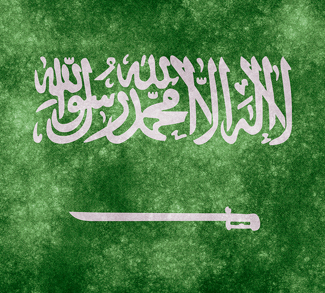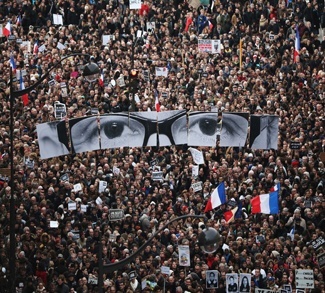This past week Europe experienced its second major terrorist attack within the last five months. The ISIS-claimed attack in Brussels signifies again just how real and how serious the militant group is about training, equipping, and tactically carrying out an assault in Europe. Although the attack appears to have been provoked or moved ahead of schedule due to the arrest of Salah Abdeslam (Belgium-born, French national personally involved in the Paris attacks), what is apparent is this attack was forthcoming based on the materials found in the apartment of the attackers, and the overall sophistication of the bombings suggests that this was not a reactionary, random plot. With details of the attackers released, their chief bomb maker Najim Laachraoui, along with two brothers Ibrahim and Khalid el-Barkraoui, are reported as Belgium nationals. As the search continues for the fourth perpetrator, questions are continually raised about where the next possible attack could be, or how to best combat an all-encompassing ISIS assault on Western Europe.
Yet the most salient inquiry about the Brussels attack has not been brought to public forum. Why is this happening in Belgium? Obviously the pursuit of the Paris attackers led the authorities to Brussels, so traveling elsewhere would have been extremely risky for the terrorists, to say the least. But why did the chase end up in Belgium? Why were so many of the Paris attackers, and now Brussels attackers, Belgium nationals? What is really going on inside Belgium? A soft analysis of the situation would point to Syria — the attacks were coordinated and ordered by ISIS leadership and carried out in accordance with their global jihadist mission. Yes, this is true. But again, why in Belgium and not in Switzerland — or Norway — or Romania? A thorough investigation into these questions will ultimately find that Saudi-Wahhabi fingerprints cloak the Brussels crime scene, further exposing the real problem facing the international community when it comes to combating terrorism.
As I wrote in my previous piece, the Wahhabi doctrine that ISIS follows is derived and mirrored from the current religious establishment in Saudi Arabia. Its atavistic, puritanical interpretations are based upon ruling by the sword and spreading (what the House of Saud views) as the purest form of Islam across the Muslim world and beyond. The royal family is dependent on this interpretation because of the religious legitimacy it provides for its dynastic hegemony. But, in order to understand how this relates to the Brussels attack one must go back to 1964. King Faisal had just deposed his half-brother, King Saud, from the crown due to his foreign policy incompetence and excessive public expenditures. King Saud (widley regarded in Saudi Arabia as a pariah) continually fumbled resistance against seditious media and political attacks from Egypt’s Gamel Nasser as he sought to divide the royal family and spread chaos inside the kingdom. Additionally, Nasser promoted a strong Arab-nationalist message across the Middle East, and the Saudi’s viewed this as a direct threat to their power in the kingdom. He openly ridiculed and denounced the royal family, encouraging dissent and ultimately providing safe haven for Saudi Prince Al-Talal who sought to liberalize the dynastic structure — this created a huge embarrassment for the kingdom. While King Saud was continually viewed as weak against Nasser’s influence, Prince Faisal was able to get the backing of the religious clerics that ultimately allowed the deposing to take place. But, legitimacy came at a price. In return, King Faisal ceded a significant amount of control to the religious Ulema-wing of the kingdom, allowing for the Ash-Shaykh (family with religious authority) establishment to reform the education system, control women’s rights, and, what is most significant in terms of the developments in Brussels, control foreign expenditure for religious propagation.
A few years earlier in 1962, Riyadh established the Muslim World League, an Islamic NGO whose goal is to: “Unite the ranks of the Muslims, and remove all divisive forces from the midst of the Muslim communities around the world, remove obstacles in the way of establishing the Muslim world union, and support all advocates of charitable deeds.” After the removal of King Saud and the induction of conservative reform brought about by King Faisal, the Muslim World League became an anti-Communist, proselytizing tool to combat Nasser’s Arab-nationalist agenda in the region. Coupled with the boom in oil revenues ($3 per barrel in 1970 to $35 per barrel in 1980) over the next decade, this afforded King Faisal and the Ash-Shaykh establishment nearly unlimited opportunities to promote their Wahhabi credence across the globe. Belgium fell in line with this foreign-religo policy in 1967 when King Baudouin secured an oil contract agreement with King Faisal.
During the 1960s, Belgium’s need for cheap labor and lax immigration policies set in motion a large number of migrants who would make their way to Belgium, particularly from Morocco and Turkey. Seeking to capitalize on the change in demographics, Faisal was able to secure a 99-year rent-free lease of the oldest mosque in Brussels, the Great Mosque of Brussels, and transform it through the monetary influence of the Muslim World League into an Islamic Cultural Center. Originally built in 1880, the building at the time had seen sufficient deterioration. Over an 11-year period, the Muslim World League funded the restoration process culminating in 1978 with its reopening, along with a fresh importation of pious, Gulf imams that began their Saudi-Wahhabi indoctrination. The Muslim World League has continually funded the Islamic Cultural Center in Brussels since the 1967 agreement, but exact figures are not known due to the lack of auditing and private grasp the kingdom keeps on its financial statements. However, over the past 20 years there have been glimpses into the makeup of the program. In 1997, the secretary general of the Muslim World League thanked King Faisal’s successor, King Fahd, for his continued support, indicating that the House of Saud had donated $1.33 billion in funding since 1962. In 2002, the Saudi newspaper Ain Al-Yaqeen published a detailed report on the extent of Saudi-Wahhabi support throughout the world noting, “the cost of King Fahd’s efforts in this field has been astronomical, amounting to many billions of Saudi riyals. In terms of Islamic institutions, the result is some 210 Islamic centers wholly or partly financed by Saudi Arabia, more than 1,500 mosques and 202 colleges and almost 2,000 schools for educating Muslim children in non-Islamic countries in Europe, North and South America, Australia, and Asia.” Furthermore, a 2008 documentary titled The Qur’an by British filmmaker Antony Thomas put the estimate of Saudi-Wahhabi funding at over $100 billion within the last 30 years.
Now with the Brussels Muslim population near 25 percent, this level of monetary influence on mosques has cultivated an environment that breeds extremism and fanaticism — an environment that has gone unchecked for almost 50 years. Nevertheless, a Wikileaks revelation has brought about details of the escalation in extremism in Brussels over the past 10 years. According to a diplomatic cable from 2007, US officials were concerned over the disbursement of Korans by the Saudi Embassy across Belgium to over 350 mosques, even providing support for non-Arab Turkish mosques noting, “According to a Turkish member of the Muslim Executive, the teaching of religious education by “motherland” imams tends to alienate or radicalize practitioners who have grown up in Belgium’s Western culture and who react against the strictures of a religious leader from a less open, “foreign” homeland. This has led to a growing gap in religious practice, particularly between generations,” and “public actions linking Belgium with radical Islam are few, but still worrisome. Most notable – and embarrassing for the country – was the death in November 2005 of Belgian citizen Muriel Degauque near Baghdad following her suicide bombing attempt. Degauque, 38, had converted to Islam, the faith of her Moroccan-origin husband who had died in a terrorist attack in Iraq. She was the first European woman to become a (failed) suicide bomber.” A separate Saudi Arabian cable in 2012 details a rise in extremism, explaining how the Belgium government quietly had the Saudi embassy remove the Islamic Cultural Center director, Khalid Alabri, stating — “His sermons were Salafist, anti-Israel, and anti-West. The guiding principle was the primacy of Salafism above all else.” Furthermore, the cable also revealed a Saudi embassy staffer in Belgium was expelled in 2012 for because of his role in “spreading the extreme so-called Takfiri dogma.”
In addition to this religious extremism that has systematically been implemented by the House of Saud, Belgian Muslims have also experienced a decline in socioeconomic standing coupled with social inequality. Additionally noted in the 2007 U.S. cable, “discrimination in housing and employment has produced clear lower-class “ghetto” areas of greater Brussels, such as Molenbeek, Scaarbeek, and St. Josse, disproportionately inhabited by Muslims regardless of their education and income. According to the OECD, unemployment among foreign-born residents is twice that of indigenous Belgians. Muslims also have higher birth rates, with the result that a third of Turks and Moroccans are under 18 compared to less than a fifth of native Belgians. A quarter of Brussels residents under 20 are of Muslim origin and an estimated fifty percent of Muslim youth in Brussels is unemployed.” Religious suppression was also documented, “The “hijab” headscarf is common apparel of both Turkish and Arab women in Brussels. Yet, the decision last October by Antwerp’s city government to ban its wearing in public schools and by civil servants who deal with the public has produced growing divisiveness on the issue.” Compounding years of disenfranchisement, social injustice, and exclusion has created a powder keg of animosity among indignant, Muslim youth in Belgium. Sparked by the ISIS outbreak in Syria, the Wahhabi jihad in Western Europe draws from mosques that have Saudi-Wahhabi influence and will be axiomatic as long as the root of the problem is not addressed.
Terrorism flourishes in areas where declining opportunity meets rising expectations. Belgium’s trouble to assimilate Muslim immigrants into society over the past 50 years coupled with a heavy, persistent injection of Wahhabism explains why Belgium has the highest rate of foreign fighters per capita fighting for ISIS — it explains why half of the Belgium terrorists are Belgium born — it explains why five of the eleven Paris terrorists were Belgium nationals or grew up in Belgium. This is not a coincidence. The Wahhabi doctrine vehemently supported and implemented inside Saudi Arabia has proven to be the biggest and most salient source of religious extremism throughout the world. Since the inception of ISIS in 2011, their Wahhabi appeal and credence has galvanized oppressed Muslim youths across the globe, particularly from mosques that have had profound influence from the Muslim World League. Rest assured, there will be an increase in these violent attacks throughout not only Western Europe, but wherever the arm of Saudi-Wahhabi funding has reached within the last half-century. Counter-terror operations and military campaigns will not put an end to this fanaticism. The tepid intransigence shown by Western foreign policy has proven to be its biggest weakness. Unless the international community addresses the problem inside the Saudi kingdom by ceasing their hypocritical foreign policies that continually fund and allow the kingdom to flourish, its existence will be conducive with Islamic terrorism for many more years, if not decades. Too many innocent lives have been lost and too many more will be gone unless the Wahhabiyyah headquarters in Riyadh is dismantled.
The opinions, beliefs, and viewpoints expressed by the authors are theirs alone and don’t reflect any official position of Geopoliticalmonitor.com.




